The medieval period was characterized by intense violence and warfare, and a variety of lethal weapons were employed. Here are a few of the most lethal medieval weapons:
1. Knightly sword
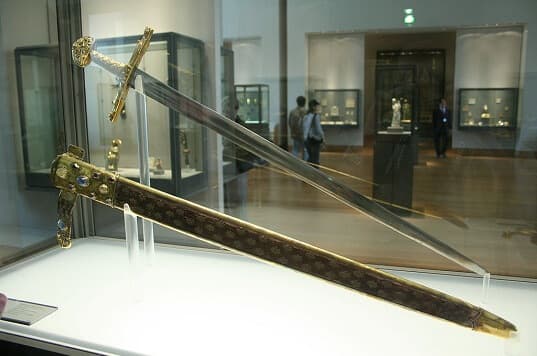
The phrase “knightly” or “arming sword” refers to a single-handed straight sword from the Middle and Late Middle Ages that evolved from the early Viking sword. They would frequently have a long crossguard that formed the cross shape, and the silver blade could bear an inscription praising God. Because it was costly to produce, knights primarily used it as a powerful slash weapon. However, by the thirteenth century, chain armor had been improved and reinforced with plates, leading to more thrust-heavy blades. A number of blade styles were invented, but they gradually lost their effectiveness against full plate armor.
2. Longsword
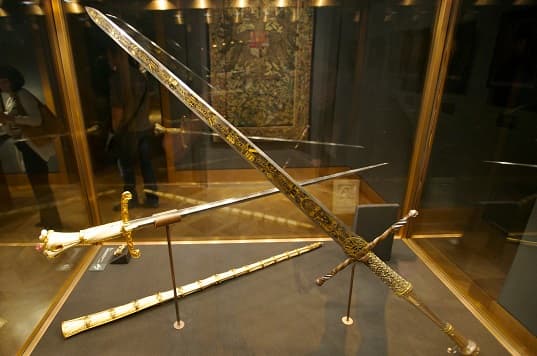
The longsword was popular from the fourteenth to the 16 centuries in late medieval periods. It has a lengthy double-edged blade and a longer handle, indicating that it was used with both hands. The primary goal was to cut and thrust the enemy with a long-range cut and thrust, making it more capable against strengthened armor than the knightly sword and equally useful against cavalry. The two-handed sword was confined to duels and was replaced with smaller, lighter swords that corresponded better to modern warfare without heavy armor.
3. Morningstar
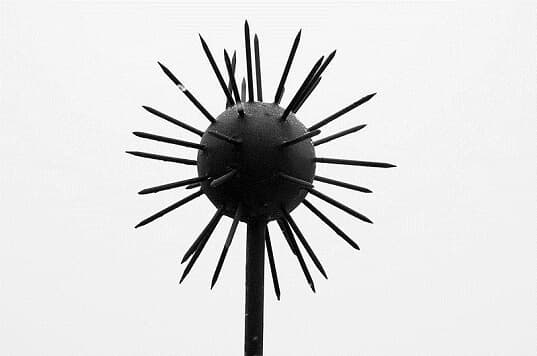
It evolved from the club around the thirteenth century, and because it resembles a star, it was appropriately termed “morning star.” It has changed dramatically since then. The most widely acknowledged variant comprises of a long wooden shaft (up to 6 feet) and a massive metal ball with spikes that give it the star-shaped appearance. Swinging this weapon was lethal, as bones would break under the force, and the spikes were great for denting and piercing even if you were wearing full plate armor. Infantry used it the most. However, due to its effectiveness, there was also a morning star with a shorter shaft for cavalry.
4. English Longbow
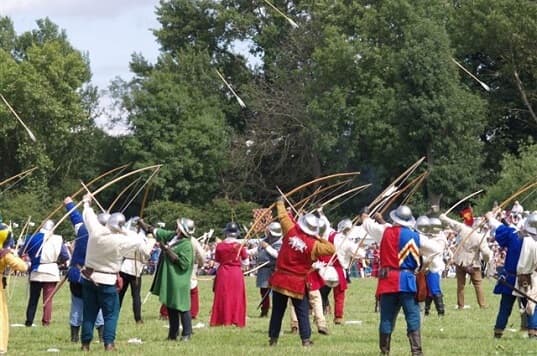
Longbows were invented in the late thirteenth and early fourteenth centuries. The standard length was six feet, and it was constructed of yew that had to dry for up to two years. Arrows may be up to 30 inches long, using string made of hemp or slack. Bolts might reach a range of up to 360 yards, making them lethal against enormous army formations. The most famous longbow victory was at Agincourt, where an outnumbered English force destroyed superior French knights. The French despised and dreaded longbowmen so much that if one was arrested, they would chop off their two firing fingers.
5. Stilleto
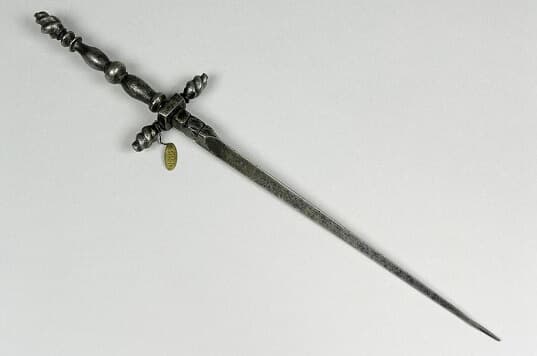
Stilleto is a dagger-like weapon with a slim, very thin, and pointed blade. The narrow yet long and pointy blade’s objective is to create as little external damage as possible while causing significant deadly interior injury. As a result of its ability to kill quietly while allowing the perpetrator to flee, the stilleto became the preferred weapon of medieval assassins. It was forbidden by city authorities in its nation of origin, Italy, because the killing manner was deemed treacherous.
6. Francisca

Francisca or Francesca was a Frankish throwing ax that was popular in the early medieval period. Before the major charge, the soldiers would have launched it from a distance of roughly ten to twelve meters at the enemy, producing confusion and panic in enemy lines. Even if the blade’s edge did not strike the enemy, the weight of the ax could cause severe injury. It was deactivated near the end of the sixth century, but the Franziska is still a popular model in athletic ax throwing.
7. Halberd
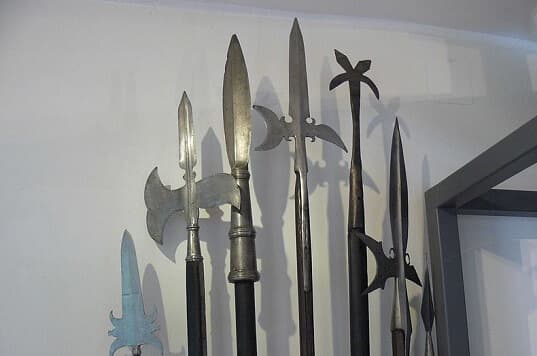
The Swiss army invented the halberd, which was mostly used in the 14th and 15th centuries. Infantry formations armed with halberds were a lethal foe to advancing cavalry. The Halberd was armed with a spike, an ax, and a hook. The hook might be used to dismount the horse, and the ax could be used to split open the horse or finish the armored knight. Halberd spread fast throughout medieval Europe due to its low cost of production. The Swiss guard still uses it as a ceremonial weapon.
8. Crossbow
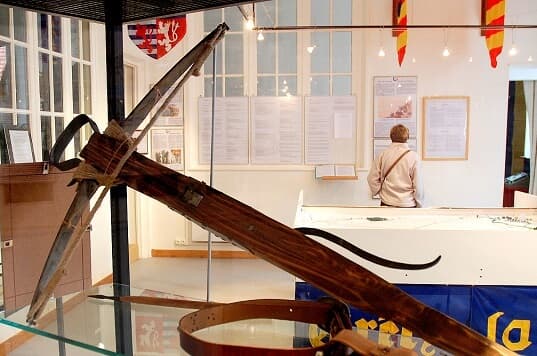
Crossbows consumed less energy and required less training than longbows. As a result, they were prominent weapons of the medieval period. They were also lethal. Because of their lethality, the Pope prohibited the use of crossbows at the Second Lateran Council. Unlike long shafts for the bow, crossbow bolts were short. It was light and featured a rhomboid point made of metal. The benefits are numerous: it could be carried, loaded, and shot by inexperienced soldiers, and it could also penetrate a knight’s full plate armor.
9. Horseman’s pick
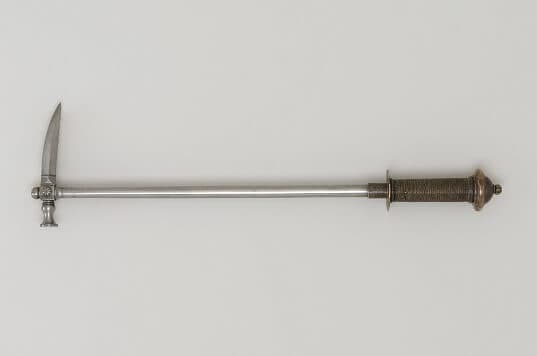
This weapon originates from Islam. It was made comprised of a long spike and a hammerhead that dented or broke apart the enemy’s armor, while the spike on the opposite side could pierce plate armor. It was first employed by cavalry and then by infantry. Normally, it would not cause fatal wounds, but piercing armor with this weapon could be difficult because it could stick in opponent armor. Nonetheless, it proved to be an effective weapon and was adopted by many countries until the invention of firearms rendered the horseman’s pick useless.
10. The Dagger Of Shah Jahan
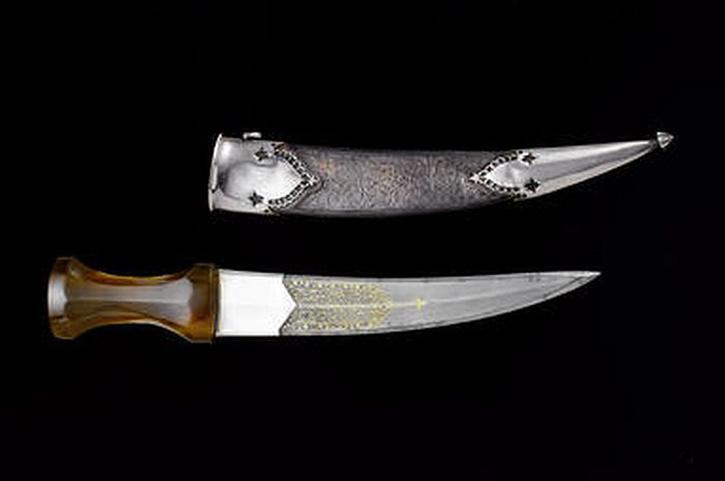
Shah Jahan is well known for building the Taj Mahal for his wife Mumtaz, but this highly elegant dagger with ceramic patterns and golden elements creating a true work of art also belonged to the Mughal Emperor. This sword was additionally detailed with Shah Jahan’s personal possessions, including his name, birthplace, and date of birth, as well as his title of nobility. It was auctioned for $3.3 million at the Bonhams Indian and Islamic sale in London in 2008.
